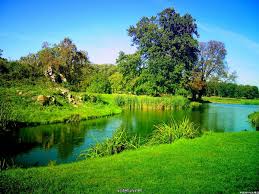Cool Nature Wallpapers History
Source(google.com.pk)
Nature is a prominent interdisciplinary scientific journal. It was first published on 4 November 1869.[1] It was ranked the world's most cited by the Science Edition of the 2010 Journal Citation Reports and is widely regarded as one of the few remaining academic journals that publish original research across a wide range of scientific fields.[2]
Research scientists are the primary audience for the journal, but summaries and accompanying articles are intended to make many of the most important papers understandable to scientists in other fields and the educated general public. Towards the front of each issue are editorials, news and feature articles on issues of general interest to scientists, including current affairs, science funding, business, scientific ethics and research breakthroughs. There are also sections on books and arts. The remainder of the journal consists mostly of research articles, which are often dense and highly technical. Because of strict limits on the length of articles, often the printed text is actually a summary of the work in question with many details relegated to accompanying supplementary material on the journal's website.
There are many fields of scientific research in which important new advances and original research are published as either articles or letters in Nature. The papers that have been published in this journal are internationally acclaimed for maintaining high research standards.
In 2007 Nature (together with Science) received the Prince of Asturias Award for Communications and Humanity.[3][4]
On October 2012, an Arabic edition of the magazine was launched in partnership with King Abdulaziz City for Science and Technology. As of the time it was released, it had about 10,000 subscribers.[5]
Contents [hide]
1 History
1.1 Scientific magazines and journals preceding Nature
1.2 The creation of Nature
1.3 Nature in the 20th and early 21st centuries
1.3.1 Editors
1.3.2 Nature's expansion and development
2 Publishing in Nature
2.1 Landmark papers
2.2 Controversies
3 Science fiction
4 Publication of Nature and related journals
5 References
6 Bibliography
7 External links
History[edit]
Scientific magazines and journals preceding Nature[edit]
The enormous progress in science and mathematics during the Nineteenth Century was recorded in journals written mostly in German or French, as well as in English. Britain underwent enormous technological and industrial changes and advances particularly in the latter half of the 19th century.[6] In English the most respected scientific journals of this time were the refereed journals of the Royal Society, which had published many of the great works from Isaac Newton, Michael Faraday through to early works from Charles Darwin. In addition, during this period, the number of popular science periodicals doubled from the 1850s to the 1860s.[7] According to the editors of these popular science magazines, the publications were designed to serve as "organs of science," in essence, a means of connecting the public to the scientific world.[7]
Nature, first created in 1869, was not the first magazine of its kind in Britain. One journal to precede Nature was Recreative Science: A Record and Remembrancer of Intellectual Observation, which, created in 1859, began as a natural history magazine and progressed to include more physical observational science and technical subjects and less natural history.[8] The journal's name changed from its original title to Intellectual Observer: A Review of Natural History, Microscopic Research, and Recreative Science and then later to the Student and Intellectual Observer of Science, Literature, and Art.[9] While Recreative Science had attempted to include more physical sciences such as astronomy and archaeology, the Intellectual Observer broadened itself further to include literature and art as well.[9] Similar to Recreative Science was the scientific journal Popular Science Review, created in 1862,[10] which covered different fields of science by creating subsections titled "Scientific Summary" or "Quarterly Retrospect", with book reviews and commentary on the latest scientific works and publications.[10] Two other journals produced in England prior to the development of Nature were the Quarterly Journal of Science and Scientific Opinion, established in 1864 and 1868, respectively.[9] The journal most closely related to Nature in its editorship and format was The Reader, created in 1864; the publication mixed science with literature and art in an attempt to reach an audience outside of the scientific community, similar to Popular Science Review.[9]
These similar journals all ultimately failed. The Popular Science Review was the longest to survive, lasting 20 years and ending its publication in 1881; Recreative Science ceased publication as the Student and Intellectual Observer in 1871. The Quarterly Journal, after undergoing a number of editorial changes, ceased publication in 1885. The Reader terminated in 1867, and finally, Scientific Opinion lasted a mere 2 years, until June 1870.[8]
Pictures Photos Images 2013
Pictures Photos Images 2013
Pictures Photos Images 2013
Pictures Photos Images 2013
Pictures Photos Images 2013

0 comments:
Post a Comment